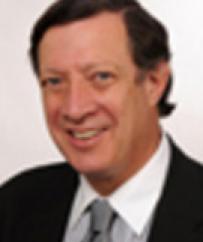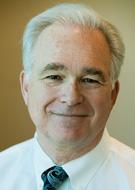Los Angeles’ urbanism is difficult to unravel, characterized typically as suburban, messy, and poorly planned. But how can we understand its origins and where the city is moving today? How does the landscape of Los Angeles come to define its trajectory? Two of LA’s prominent civic leaders—Daniel Rosenfeld, President, The George Crenshaw Development Project, and Paul Vandeventer, President & CEO, Community Partners—have created a framework in the following TPR exclusive article to anchor the city’s physical timeline. Their observations offer insight into a “Fifth Covenant” between Angelenos and the land, setting the stage for sustainable growth.

Dan Rosenfeld
"The era of The New Unity offers a hope of reinventing the ever-imperfect dream that has drawn generations over centuries to this once-tiny dot on a fickle-flowing river in a land of boundless opportunity." —Daniel Rosenfeld and Paul Vandeventer
 There’s a new covenant developing between Angelenos and the land on which they live, and it’s about time. The old covenant has soured. It willy-nilly sited homes, industry, and freeways resulting in classic urban chaos, from the San Gabriels to the Pacific Ocean. We’re betting that the next covenant—one we’ve dubbed “The New Unity”—will lead us to a whole new way of seeing and experiencing one another, our city, and the larger region we occupy.
There’s a new covenant developing between Angelenos and the land on which they live, and it’s about time. The old covenant has soured. It willy-nilly sited homes, industry, and freeways resulting in classic urban chaos, from the San Gabriels to the Pacific Ocean. We’re betting that the next covenant—one we’ve dubbed “The New Unity”—will lead us to a whole new way of seeing and experiencing one another, our city, and the larger region we occupy.
So what do we mean by covenant, a word that typically stirs up connotations both Biblical and sacred? Throughout history, every community has served as a steward for the land it inhabits. The people of Los Angeles are no different. Their stewardship not only continues a covenant handed down from previous generations, but also represents a commitment to future Angelenos.
A covenant with the land suggests a shared conviction across generations that responsibly managing the land matters. Stewardship means both knowledge of the past and wisdom inform decisions that shape the future. We’ve created something remarkable in Los Angeles despite wavering in our stewardship over the decades between the poles of mastery and drift.
Even as a relatively young city on the globe, Los Angeles has had both the space and the means to create at least four prior covenants, each with differing characteristics and mixed results.
Reflecting on the relationship between Angelenos and the land evokes distinctive eras of our history, pivot points that have successively swung us from one era to the next. These points go by different names that we think reflect the unique covenant of each era: Native Settlements, Villages, the Compact City, and Sprawl. Economic engines particular to the time drove growth, accelerating each new era from the energy of the preceding one.
The Native Settlements were organic responses to the region’s ecology. Small in scale and located near permanent sources of water and food, these settlements harmonized with the region’s natural ecosystem. But they were also vulnerable to environmental changes, and the original Native Americans who settled them quickly found themselves overwhelmed by disease, drought, and the new economy of European immigrants who began arriving after 1781.
The European economic model led to the founding of Villages, mostly agricultural settlements at first, where a service economy encouraged the cultivation of surrounding open land. Some of these original villages—including Watts, Pomona, Anaheim, Venice, and Eagle Rock—remain part of present day Los Angeles. Others, such as Lankershim and Tropic, disappeared entirely. Although they were often supported and connected by water diversion and irrigation projects, poorly kept roads separated villages. The region became a constellation of farming towns.
The City of Los Angeles itself grew into the pre-eminent village among villages, gradually dominating the regional economy. But powerful governance and infrastructure forces also reinforced LA’s regional hegemony. Acknowledging the influence of Los Angeles, the California legislature designated it the seat of much-larger Los Angeles County in 1860, while the state’s industrial barons built railroads that terminated in the city, delivering a bounty of people and goods. Fundamental to Los Angeles dominating the region, rather than, say, Santa Monica or San Pedro (with their desirable oceanfront amenities, climate, and trade connections), was Los Angeles’ central location and the availability of fresh water from the Los Angeles River. Little more than a trickle when it’s not a torrent, the river is why we are here.
The prosperity of Los Angeles paralleled its eastern forbearers and, well into the early 20th Century, the covenant between Angelenos and the land reflected a typical American Compact City. Most economic activity took place within walking distance of Downtown, and most people lived there as well. Although cars were gradually appearing, Downtown had a pedestrian-oriented character. Streetcars plied the city’s core and ferried people to the beach and outlying green spaces such as Hollenbeck and Westlake parks, or up the steep slopes of the San Gabriel Mountains to Mt. Lowe with its luxury hotel. Only a few close-in communities like Boyle Heights and Angelino Heights hinted at dramatic changes soon to come.
Legendary, and a much-studied phenomenon even today, the Sprawl that followed World War II attracted attention and, too often, imitation around the world. Legions of returning veterans, vigorous public support for housing and infrastructure, and a splendid Mediterranean climate transformed Los Angeles into an international symbol of centrifugal growth. America’s burgeoning global economic dominance, nimble opportunism by Southland real estate barons, relentless boosterism by housing developers and the owners of the Los Angeles Times, and an ambitious complex of legal and banking interests fueled the surging metropolis.
At the turn of the 21st Century, Los Angeles County and its four adjacent counties covered some 10,000 square miles, serving as home to more than 15 million souls and appearing, at least from an airplane, as a visual carpet of lights, a beacon of opportunity and, to some observers, a harbinger of social collapse. Two decisive and deleterious side effects of the horizontal growth—the abandonment of the city’s urban core and dramatic separation among neighborhoods and communities—signaled a critical cultural and physical turning point.
By 1992, the Los Angeles dream—a single-family home on a small plot of land with a yard—began fading. That was a year of destructive wildfires, jolting economic recession, decimated faith in government, and the violent unrest that followed the Rodney King police abuse verdict. It also marked a time when almost every major business had fled Downtown for the suburbs or more distant, business-friendly cities. Even the Los Angeles Times, with its corporate headquarters topped by the company’s name in lights, considered moving, and a Chicago newspaper chain eventually acquired the company.
Out of the chaos, however, the city’s resilience and ambition asserted itself again. Between Angelenos and their land there emerged from the faded dream a fifth covenant that we call The New Unity.
Capitalizing on a global trend toward urban living, a generation of young pioneers and savvy elders seeking the convenience and excitement of city life—and disenchanted with long, expensive commutes—rediscovered the city’s historic core. Major attractions with region-wide appeal, including Staples Center, LA Live, Frank Gehry’s iconic Disney Hall, conference hotels, museums, and other high-art temples also located Downtown. Government and civic leaders abetted this trend, easing the way with public infrastructure investments and a reinfusion of private wealth into the central city. Among other policies, they encouraged adaptive reuse of historic structures and supported construction of a public transit network with Downtown as its hub.
The transit network alone represents a public investment exceeding $30 billion, one of the largest in American history. As it spreads across Los Angeles County, the system has influenced neighborhood character, commercial decisions, and mobility choices near more than 100 light rail stations. In the next 20 years, the region’s Metropolitan Transit Authority will contract for the building of 100 additional stations. As never before, transit riders now glide to their destinations on a growing web of sleek steel track, gazing from the windows of modern trains at drivers jockeying for slim advantage on clogged freeways and streets.
If Downtown and various built-up areas comprise dense points on the urban map, then the Los Angeles River has become a 58-mile line curving through the city’s disparate communities, tying them to the core. Both public and private efforts have made the river the focus of deep civic interest and massive investment commitments. For all the scale, greening benefits, and urban vigor its revitalization promises to unleash, the river’s core appeal as a unifying feature lies in a fundamental ecology that Native Americans and early European settlers intuitively understood.
Coupled with new urban transit architecture reaching across the city and county, Downtown Los Angeles affords the city not just a new physical unity. It also embodies new potential for scuttling outmoded social and political structures, along with the distances that separated communities during the era of Sprawl. People who know their neighbors tend to care about them. When people experience their lives as linked, they more easily see and address their common needs. Social contact seals the social contract, and from that bond something sacred indeed grows.
The era of The New Unity offers a hope of reinventing the ever-imperfect dream that has drawn generations over centuries to this once-tiny dot on a fickle-flowing river in a land of boundless opportunity.
- Log in to post comments



